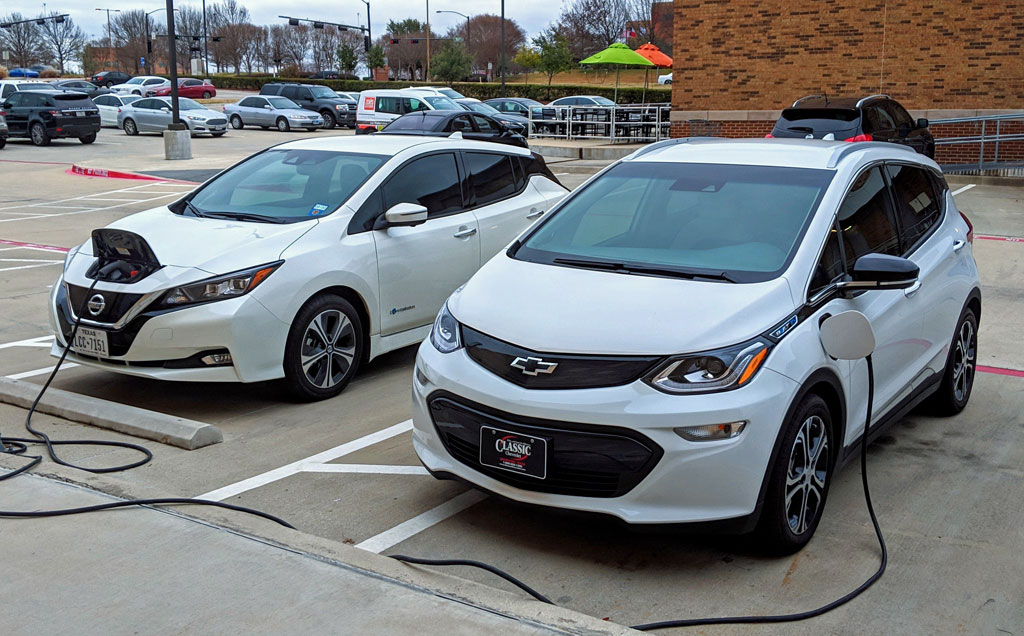
The GM Chevrolet Bolt EV. Source: Flickr Image.
General Motors (GM) is one of the world’s largest and most successful automobile manufacturers. With a history spanning over 100 years, GM has built a reputation for producing high-quality vehicles that are both reliable and innovative.
Over the years, GM has developed several competitive advantages and core competencies that have helped it maintain its position as a leader in the industry. From its extensive research and development capabilities to its global reach and diverse portfolio of brands, GM has a number of strengths that set it apart from its competitors.
This article will explore some of GM’s competitive advantages and core competencies and how they contribute to its ongoing success.
Let’s take a look.
Please use the table of contents to navigate this page.
Table Of Contents
Definitions And Overview
O1. How Does GM Stay Ahead Of Its Competitors
A Deep Moat In The Auto Industry
A1. Vast Network Of Dealerships
A2. Significant Investment In R&D
A3. Involvement In Delivery And Logistics
A4. Owner Of Car And Ride Sharing App
New Technology
B1. BEV Development
B2. Autonomous Driving
B3. Vehicle Connectivity And Safety
Alternative Tech
C1. Alternative Fuel
C2. Hydrogen Fuel Cell
Government
Environment
E1. GM Cares About The Environment
Conclusion And Reference
S1. Conclusion
S2. References and Credits
S3. Disclosure
How Does GM Stay Ahead Of Its Competitors
General Motors has stayed ahead of its competitors in the automotive industry by constantly innovating and adapting to changing market trends. They have invested heavily in research and development to improve the performance and safety of their vehicles while also exploring new technologies such as electric and autonomous vehicles.
Additionally, GM has focused on improving its supply chain and manufacturing processes, allowing it to produce high-quality vehicles efficiently and at a lower cost than its competitors. Finally, they have also prioritized customer satisfaction and loyalty, providing exceptional service and support to their customers even after the sale.
Vast Network of Dealerships
GM has a vast network of dealers to market its vehicles and automotive parts worldwide. These outlets include distributors, dealers, authorized sales, services, and parts outlets.
As of Dec 31, 2023, the company had 11,668 authorized dealerships and other agents performing similar functions globally, according to the 2023 annual report. Of this number, 4,618 were in the North American region, while 7,050 were outside North America.
GM’s huge dealership network helps the company sell, distribute, and service its products around the clock. These dealerships are critical to GM’s success as they maintain the primary sales and service interface with the end customers.
To put it in perspective, Tesla had only about 1,200 retail and sales outlets as of fiscal 2023, a much smaller figure compared to GM’s vast network of dealerships. Ford’s number of dealers reached 9,500 units as of 2023, according to this article: Ford vehicle wholesale by country and by region.
Of course, the comparison with Tesla may not be appropriate as Tesla does not sell its cars through dealerships. But the figure gives you an idea of how massive the network of General Motors’ dealerships is over Tesla’s stores and service locations.
In general, the vast number of dealerships gives GM a competitive edge over its competitors in maintaining its market shares all around the world.
Significant Investment In Research and Development
GM’s R&D as at Dec 31.
| R&D Expense & Ratios | Fiscal Years | ||
|---|---|---|---|
| 2021 | 2022 | 2023 | |
| R&D Expense ($ Billions) | $7.9 | $9.8 | $9.9 |
| R&D YoY Growth | 27.4% | 24.1% | 1.0% |
| R&D To Revenue Ratio | 6.2% | 6.2% | 5.8% |
| R&D To Total Cost And Expense Ratio | 7.2% | 7.1% | 6.5% |
GM invests a significant amount of its research and development budget in various areas, such as advanced propulsion technologies, autonomous driving technologies, and connected car technologies. The company also invests in developing fuel-efficient engines, lightweight materials, and innovative safety features.
Additionally, GM is expanding its focus on electric and hybrid vehicles to reduce its carbon footprint and meet the growing demand for eco-friendly transportation options.
GM’s spending on R&D totaled $10 billion as of 2023. The figure has significantly risen since 2021, as shown in the table above. On average, GM’s R&D spending has grown 17.5% since 2021.
For perspective, Ford’s research and development spending totaled only $8.2 billion in 2023, while Tesla spends a much smaller figure than General Motors, as shown in this article: GM R&D Vs Tesla.
In short, GM invests billions in research and development, comprising 6% of its total revenue and 7% of its total cost and expense, to maintain its competitiveness and core competencies in the automobile industry.
GM Will Own The Delivery And Logistics Industry
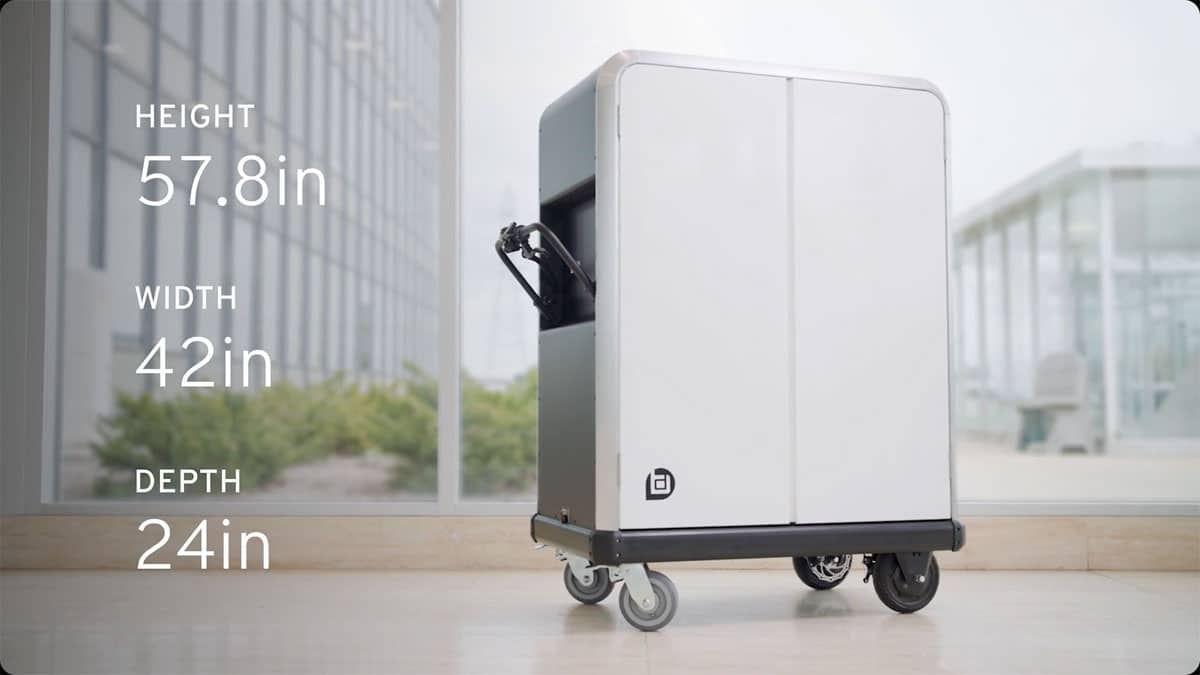
GM BrightDrop Trace
In addition to building cars and batteries, General Motors has actively participated in the delivery and logistics industry.
GM’s involvement in the delivery and logistics industry is not just about making delivery trucks but about providing an all-around and complete solution to the entire industry. To this end, GM is building an ecosystem for the delivery and logistics industry.
The ecosystem GM is working on comprises all-electric and connected first-to-last-mile products and services. Through this ecosystem, GM created BrightDrop. Effectively, BrightDrop is a new business venture wholly owned by GM, aiming to create sustainable solutions for the delivery and logistics industry.
BrightDrop’s products and services include commercial delivery vehicles, smart containers, specifically designed delivery carts that transport goods and services over short distances, a software platform called BrightDrop Software Platform for fleets, and asset management designed to help delivery and logistics companies deliver goods more efficiently.
Far from over, GM has even dedicated a manufacturing plant in Ingersoll, Ontario, to produce the all-new BrightDrop EV600 and BrightDrop EV410 electric light commercial vehicles. As of December 2021, GM has already started deliveries of the BrightDrop EV600 to FedEx Express, according to the 2021 annual report.
Essentially, Brightdrop is part of General Motors’ broader strategy to lead the transition to an all-electric future and create a world with zero crashes, emissions, and congestion. This initiative is another of GM’s efforts to boost its competitive advantage and core competencies in the automotive industry.
Owner Of A Car and Ride Sharing Platform
Update: On April 21, 2020, GM announced plans to shut down Maven Gig and Maven Car Sharing.
General Motors is the owner of Maven, which is a car and ride-sharing mobile app that was created in January 2016. Maven consists of two services, namely Maven Gig and Maven Car Sharing.
Maven Gig allows members to lease vehicles to drive in any ride-sharing and delivery services (package, grocery, and food), and the app works with companies such as Uber, Deliv, and GrubHub. Members can choose from a wide variety of vehicles and can even select the Chevrolet Bolt EV, which includes a free charging service.
Maven Car Sharing is a mobile app for car sharing where users can rent a vehicle at an hourly or daily rate and, at the same time, lease out their GM vehicles for rental and earn money for doing it.
According to the 4Q19 annual report, Maven is available in 15 US, Canadian, and Australian cities. As of Dec 31, 2018, Maven Gig and Maven Car Sharing have accumulated over 171 million miles driven, 34 million all-electric miles driven, and 247,000 reservations. Maven now has over 190,000 members.
Battery Electric Vehicles Development
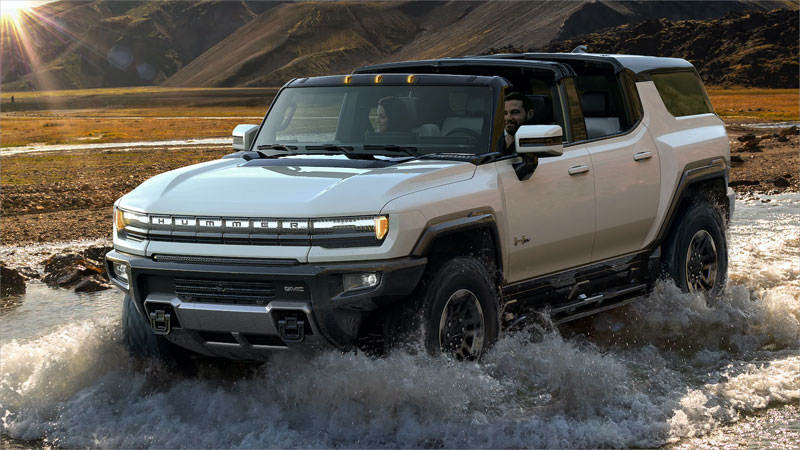
General Motors’ Hummer EV
General Motors’ electric vehicle initiative is a major effort by the company to transition towards electric vehicles (EVs) and reduce its carbon footprint. The initiative includes plans to launch at least 20 new electric vehicles globally by 2023 to achieve a fully electric lineup by 2035.
This includes the recently enhanced Chevrolet Bolt EV, which has about 259 miles of range with the 2023 model year. Other than the Chevrolet Bolt EV, GM has also recently announced an all-new battery-electric architecture that will be launched on an upcoming Cadillac EV model.
Moreover, GM also has launched an EV version of the GMC Hummer since May 2020, an upcoming battery-electric truck, which will be built at the Detroit-Hamtramck Assembly, called Factory ZERO, that has already been re-tooled into a fully-dedicated electric vehicle facility.
With all the upcoming electric vehicles, the demand for battery cells will be huge. Instead of sourcing battery cells from third parties, GM has planned to mass-produce them through collaboration with LG Energy Solution on an equally owned joint venture.
Besides, GM has also unveiled an improved battery pack called Ultium which is intended to be flexible and multifaceted so that the battery cells can be stacked in any way the company wants it, whether horizontally or vertically.
To simplify customer charging experiences, GM has introduced the Ultium Charge 360, an integrated charging approach designed explicitly for EV customers that include access to charging networks, GM mobile apps, and products and services.
For example, the Ultium Charge 360 has enabled one of GM’s mobile apps, the myChevrolet, to have access to the largest collective electric vehicle charging network in the U.S.
This data of a vast charging infrastructure network is a result of GM’s successful collaboration with several charging network operators, which has given GM access to real-time data on their respective networks and charge station health.
GM’s seriousness in embracing an all-electric future is a major step toward gaining the upper hand in the all-electric race.
Leader In Autonomous Driving
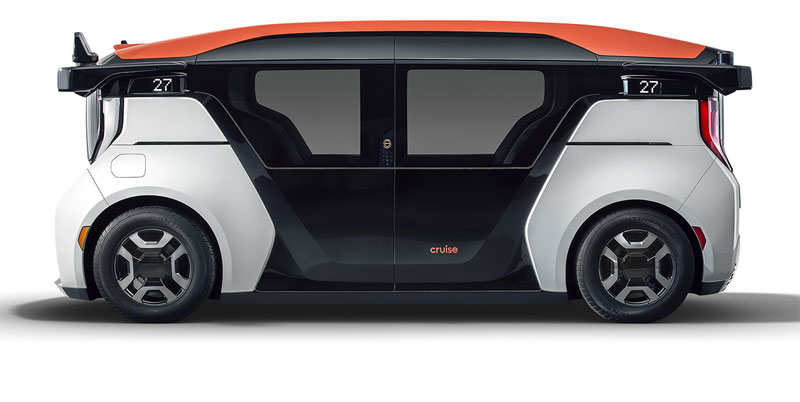
General Motors’ Cruise Origin
GM is actively developing its internal state-of-the-art autonomous driving technology. The company invests in advanced self-driving technology and tests autonomous vehicles in several cities, such as San Francisco, Scottsdale, and Michigan.
As a result, GM has created the Super Cruise which is a driver assistance feature that enables hands-free driving on the highway.
Apart from the Super Cruise, GM has also introduced the Ultra Cruise, an even more powerful and advanced version of driver-assist technology that is reserved only for premium vehicles.
For your information, GM has already rolled out the Super Cruise to all Cadillac models and other car models in the U.S. and will subsequently roll out the Ultra Cruise in 2023.
In terms of autonomous vehicles, GM set up the Cruise AV in January 2018 in a joint venture with several parties. Cruise AV is a self-driving vehicle different from others in that it was built from the start to operate safely without any driver.
A particular model that stands out under the Cruise AV lineup is the Cruise Origin, a purpose-built, all-electric, self-driving vehicle that is being co-developed by GM, Cruise, and Honda Motor Company, Ltd. (Honda). The Cruise Origin is designed based on General Motors’ all-new modular architecture, powered by the Ultium platform. It will be manufactured at Factory ZERO starting in early 2023, pending government approvals, according to the company’s 2021 annual report.
Once GM gets the regulatory approval for deployment, the Cruise Origin, a production-intent autonomous vehicle, will be mass-produced in the most efficient and cost-effective ways. Far from over, GM has also successfully invited Softbank Vision Fund to invest in Cruise in May 2018. Cruise, which used to be named GM Cruise, is responsible for developing and commercializing autonomous vehicle technology for the company.
In October 2018, Honda and GM agreed to work together to fund and develop a shared autonomous vehicle for GM Cruise. This joint venture aims to create a shared autonomous vehicle (SAV) that can be manufactured at a high volume.
If autonomous driving is going well as planned, GM will have an edge over its competitors, not to mention the extra revenue source from the respective initiative.
Leaders In Vehicle Connectivity And Safety
Although GM has scrapped its car and ride-sharing platform Maven Gig and Maven Car Sharing, it is still a proud owner of OnStar. This service provider offers connectivity and advanced vehicle safety features through subscription-based and complimentary plans.
OnStar provides safety and security services for retail and fleet customers, including automatic crash response, emergency services, roadside assistance, crisis assist, stolen vehicle assistance, and turn-by-turn navigation. Apart from the safety features, the platform also has a mobile app called OnStar Guardian that allows customers to access key OnStar safety and security services from anywhere and in any vehicle.
Through the OnStar connectivity platform, a proud GM vehicle owner can remotely control certain vehicle features, while EV owners can even locate charging stations. In addition, GM’s customers also can enjoy on-demand vehicle diagnostics, GM Smart Driver, GM Marketplace in-vehicle commerce, Amazon Alexa in-vehicle voice, Google’s Voice Assistant, navigation and app ecosystem, connected navigation, and SiriusXM with 360L and 4G LTE wireless connectivity.
In August 2021, GM also announced plans to roll out 5G connectivity in select model year 2024 vehicles. In short, GM is leveraging technology to expand its competitive advantages and core competencies in vehicle connectivity and safety features.
Alternative Fuel Vehicles Technology
GM has a couple of alternative fuel vehicles technology such as the FlexFuel vehicles that can run on ethanol-gasoline blend fuels as well as technology that can support compressed natural gas and liquefied petroleum gas (LPG).
FlexFuel vehicles have already been rolled out in the US and Canada for the 2020 models to retail and fleet customers capable of operating on gasoline, E85 ethanol, or any combination. In Brazil, most vehicles sold are FlexFuel vehicles capable of running on high ethanol blends.
Hydrogen Fuel Cell Technology
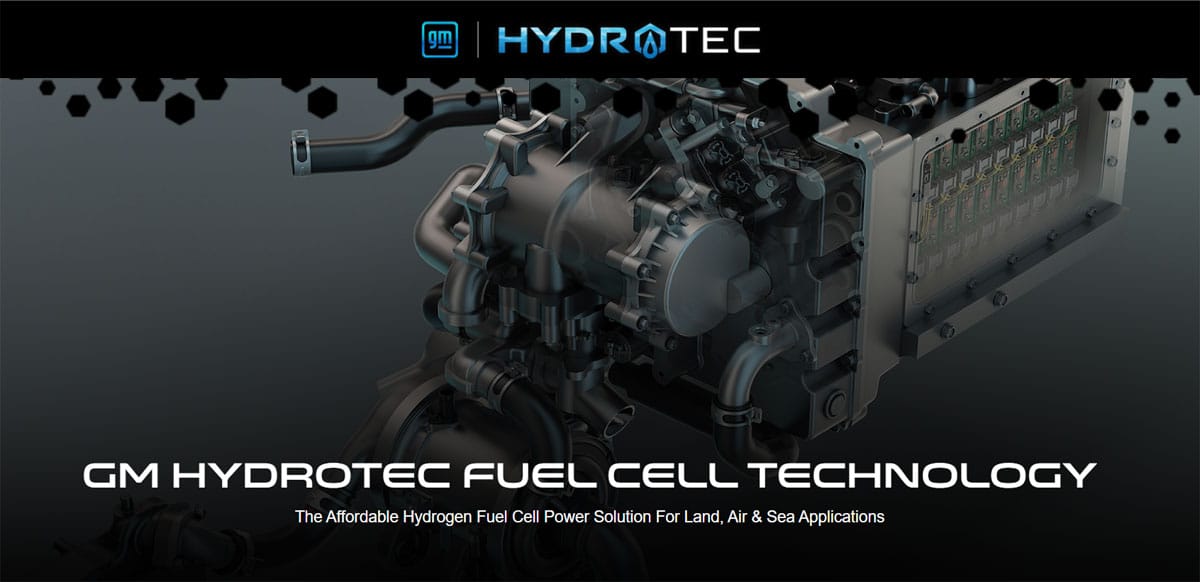
GM HYDROTEC
In addition to biodiesel blend fuel, GM is a leader in hydrogen fuel cell technology. For your information, General Motors is the only company developing and commercializing both hydrogen fuel cells and EV battery technology.
For this reason, the company has set up GM Hydrotec Fuel Cell Technology, a wholly owned subsidiary of GM aiming to develop hydrogen fuel cell applications across transportations and industries, including mobile power generation, class 7/8 truck, locomotive, aerospace, and marine applications.
GM believes hydrogen fuel cells will be important in many automotive and other mobility applications. Customers will benefit more from the ability to refuel quickly, an extended range, suitability for heavier payloads, and central refueling of large fleets.
Through Hydrotec, GM is collaborating with Honda in terms of research and advanced engineering efforts in developing and commercializing fuel cell systems. GM is looking at all angles to identify a business opportunity for hydrogen fuel cell technology and is not ruling out the possibility of working with the US Army and Navy.
As of 2021, GM has announced that it will provide support of HYDROTEC technology to Navistar, Inc., which is developing hydrogen-powered heavy trucks to launch in 2024, and to Liebherr-Aerospace, which is developing hydrogen-powered auxiliary power units for aircraft.
Apart from automotive and aircraft applications, GM’s HYDROTEC fuel-cell technology also will be applied in locomotives through a collaboration with Wabtec Corporation. The collaboration with Wabtec Corporation includes developing and commercializing the HYDROTEC fuel systems for locomotives and the Ultium platform, which will be supplemented into the systems.
Again, GM’s success in hydrogen fuel cell technology in various applications will expand its ecosystem, which will help boost its competitive advantages and core competencies.
Defence And Military
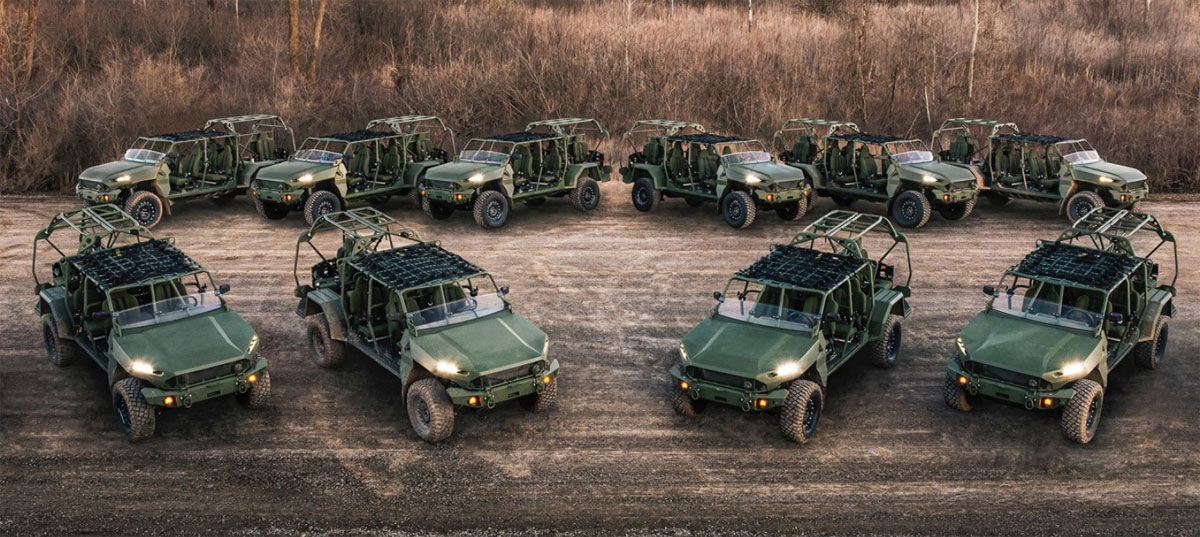
GM Defence
Aside from retail and fleet customers, GM also serves the military and defense industry. In this initiative, GM set up the GM Defence, also a wholly owned subsidiary of the company, aiming to provide commercially developed solutions, including purpose-built vehicles, for government and military customers.
In its 2021 annual report, GM stated that its defense segment’s growth strategy is focused on building a portfolio of products, including the Infantry Squad Vehicle and the purpose-built Heavy Duty Suburban, by leveraging its manufacturing and innovation capabilities.
GM’s involvement in the military and defense industry differentiates the company from its competitors and boosts its competitive advantages and core competencies. Moreover, the military and defense segment also adds an extra revenue source for General Motors.
GM Cares About The Environment
While this feature may not necessarily be part of GM’s competitive advantage and core competencies in the automobile industry, it’s good to know that GM cares for the environment in its quest for a leading market share position in the industry.
In line with the company’s ultimate goal of zero greenhouse gas emissions, GM has committed to waste reduction and cost saving as part of its business strategy. To do this, GM is converting as many of its worldwide operational facilities as possible to landfill-free facilities.
A landfill-free facility is dedicated to more than 90% of waste materials being composted, reused, or recycled. In addition, approximately 5% of waste in waste-to-energy facilities is converted to energy. As a result, approximately more than 5 million metric tons of greenhouse gas have been avoided from being released into the atmosphere in the company’s global operations since the launch of the GM Zero Waste program.
In 2021 alone, GM has successfully diverted over 1.1 million metric tons of waste from landfills and incinerators through composting, reusing, and recycling, according to the 2021 annual report. Far from over, the company aims to meet its electricity needs with 100% renewable energy by 2025 in the U.S., a goal that GM recently accelerated from 2030 and by 2035 globally.
As of Dec 31, 2021, GM had implemented projects that had increased renewable energy usage to 1 gigawatt, approximately 75% of its U.S. electricity use and 40% of its global electricity use. Additionally, between 2019 and 2020, GM executed its largest power purchase agreement to date, with 180 megawatts of solar electricity supplying its U.S. operations starting in 2023.
There are many more examples where GM has spent considerable efforts towards minimizing greenhouse gas emissions in its global business operations. In short, GM is becoming not only an automotive powerhouse but also a company that does so in a responsible way.
Conclusion
In short, GM is a leading automotive manufacturer with a vast network of dealerships and several next-generation technologies, such as all-battery electric vehicles, autonomous driving, vehicle connectivity and safety features, powerful mobile apps, and alternative fuel cell technology.
The company also has been spending considerable funds on research and development, totaling as much as $10 billion in fiscal 2023.
While busy making money, GM does not forget about caring for the environment with its active waste reduction strategy and commitment towards renewable energy usage.
All in all, GM’s competitive advantages and core competencies are hard for its competitors to replicate.
References and Credits
1. All financial figures presented were obtained and referenced from GM quarterly and annual reports, investors presentations, press and earnings releases, SEC filings, shareholder letters, etc., which are available on General Motor Investor Relations.
2. Featured images in this article are used under a Creative Commons license and sourced from the following websites: MomentiMedia TechFever Network and Steve Rainwater.
Disclosure
References and examples such as tables, charts, and diagrams are constantly reviewed to avoid errors, but we cannot warrant the total correctness of all content.
The content in this article is for informational purposes only and is neither a recommendation nor a piece of financial advice to purchase a stock.
If you find the information in this article helpful, please consider sharing it on social media and providing a link to it from any website to create more articles like this.
Thank you!
